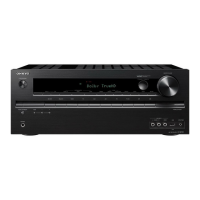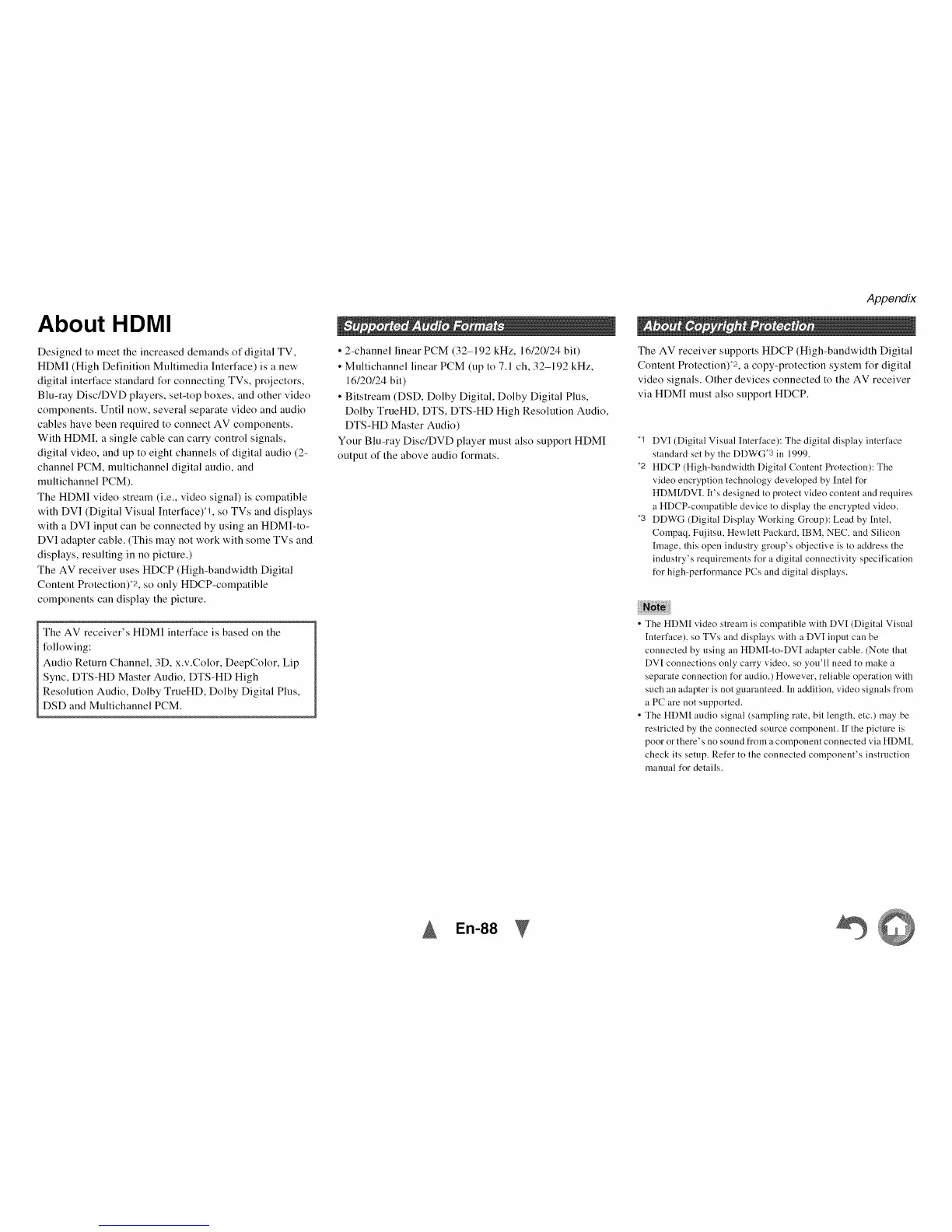About HDMI
Designed to meet the increased demands of digital TV,
HDMI (High Definition Multimedia Interface) is a new
digital interface standard for connecting TVs, projectors,
Blu-ray Disc/DVD players, set-top boxes, and other video
components. Until now, several separate video and audio
cables have been required to connect AV components.
With HDMI, a single cable can carry control signals,
digital video, and up to eight channels of digital audio (2-
channel PCM, multichannel digital audio, and
multichannel PCM).
The HDMI video stream (i.e., video signal) is compatible
with DVI (Digital Visual Interface)*1, so TVs and displays
with a DVI input can be connected by using an HDMI-to-
DVI adapter cable. (This may not work with some TVs and
displays, resulting in no picture.)
The AV receiver uses HDCP (High-bandwidth Digital
Content Protection)*2, so only HDCP-compatible
components can display the picture.
The AV receiver's HDMI interface is based on the
following:
Audio Return Channel, 3D, x.v.Color, DeepColor, Lip
Sync, DTS-HD Master Audio, DTS-HD High
Resolution Audio, Dolby TrueHD, Dolby Digital Plus,
DSD and Multichannel PCM.
o_ ol,N_ __ 0 • _J Bt _
• 2-channel linear PCM (32-192 kHz, 16120/24 bit)
• Multichannel linear PCM (up to 7.1 ch, 32-192 kHz,
16/20/24 bit)
• Bitstream (DSD, Dolby Digital, Dolby Digital Plus,
Dolby TrueHD, DTS, DTS-HD High Resolution Audio,
DTS-HD Master Audio)
Your Blu-ray Disc/DVD player must also support HDMI
output of the above audio formats.
Appendix
The AV receiver supports HDCP (High-bandwidth Digital
Content Protection)% a copy-protection system for digital
video signals. Other devices connected to the AV receiver
via HDMI must also support HDCP.
"1 DVI (Digital Visual [nterface): The digital display interface
standard set by the DDWG _3 ill 1999.
*2 HDCP (High-bandwidth Digital Content Protection): The
video encryption technology developed by [ntel for
HDM[/DVI. [t's designed to protect video content and requires
a HDCP-compatible device to display the encrypted video.
*3 DDWG (Digital Display Working Group): Lead by [ntel,
Compaq, Fujitsu, Hewlett Packard, IBM, NEC, and Silicon
[mage, this open industry group's objective is to address the
industry's requirements for a digital connectivity specification
for high-performance PCs and digital displays.
• The HDM[ video stream is compatible with DVI (Digital Visual
Interface), so TVs and displays with a DVI input can be
connected by using an HDM[-to-DVI adapter cable. (Note that
DVI connections only carry video, so you'll need to make a
separate connection for audio.) However, reliable operation with
such an adapter is not guaranteed. In addition, video signals from
a PC are not supported.
• The HDM[ audio signal (sampling rate, bit length, etc.) may be
restricted by the connected source component. If the picture is
poor or there' s no sound from a component connected via HDM[,
check its setup. Refer to the connected component's instruction
manual for details.
En-88
©©

